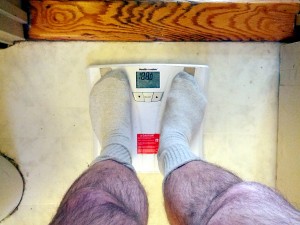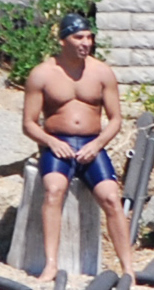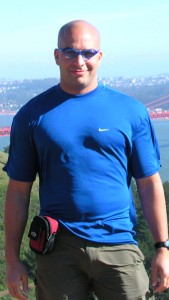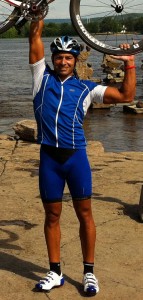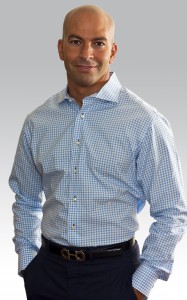A few months ago, I reported that I had lost over 10 pounds and was finally able to fit into some of my old shirts again.
What I didn’t tell you is that I had lost most of that weight by early 2012, and that by the summer I had gotten stuck at 190-195 pounds, which is still about 20 pounds too heavy (and several inches too thick around the middle). As of the beginning of December, I still hadn’t lost any more weight (and may have gained some back), and I was sure my cholesterol numbers still hadn’t improved sufficiently, and my annual physical was coming up fast.
Then I caught a segment on John Stossel’s “Food Bunk” show, an interview with Gary Taubes and Dr. Peter Attia, cofounders of the Nutrition Science Initiative. I immediately sought out Gary Taubes’s latest two books, finally took my doctor’s advice (which I’ll get to in a moment), revised my diet, and as of Monday morning (when I happen to be writing this) my bathroom scale read 184.6. (That’s a whole 10 pounds off of what it said a month ago.)
“Maybe you should cut back on carbs.”
This is what my doctor had said to me, over a year ago. My weight was 205 pounds. My HDL cholesterol was way too low (26 mg/dL), and my triglycerides were through the roof (429 mg/dL). I believe the term “pre-diabetic” was somberly intoned at one point. He said that cutting back on carbs has been shown to improve cholesterol numbers.
I tried, kinda. But had only limited success. It’s exceptionally hard to cut back on carbs without loading up on fat, and I believed that fat was bad for a body and bad for my cholesterol. I of course knew of the Atkins diet. And I heard the paleo-dieters from time to time. And I believed very little of it. They all sounded like snake-oil salesmen or evangelists or conspiracy nuts (or sometimes all three).
In the interim, I read through Dr. Oz’s book, and began losing weight. But by this past September (about 3½ months ago), I was down to a low of 190 pounds (probably because I had cut way back on sugar and white flour), my HDL was up a little (30 mg/dL—still not nearly high enough), and my triglycerides were down a bunch (162 mg/dL—so much better, but still not nearly low enough).
My doctor gave me a prescription for Lipitor, at a low dose. And it probably did help with my cholesterol. However, by December, my weight (according to my bathroom scale) was back up to 195 (probably because I was eating more sweets on the weekends). And I was not fitting any easier into the smallest of my old shirts. And I knew that without shedding my spare tire, I’d probably never be able to get off the cholesterol and blood-pressure meds.
And then I saw the Gary Taubes/Peter Attia interview. They promoted the idea that what we believe about nutrition is based substantially on politics, and not substantially on science. That the state of the science in nutrition and obesity research is abysmal, no where near as certain as we’ve been led to believe. And that what we eat may be more important than how much we eat. These all resonated with my concept-oriented, logical mind.
And then and only then did they start talking about what happened when they, each of them, cut back on carbs and loaded up on fat. Peter Attia, in particular, used to look like me, even though he did athletic activity 3-4 hours every day. Now he does stuff like flipping giant tires.
Okay… The way I’ve framed that is a little misleading. You’ll have to read his blog for details on his nutritional and athletic regimen. But what impressed me is that even though he has the exact same body type as I—maybe even a little pudgier—he looks nothing like me.
After numerous hours of additional research, I’ve now come to believe that nutrition and obesity research, as usually practiced, bears more in common with ghost hunting and other pseudo-science than with scientific inquiry. Ghost hunters have fancy measurements and sciency-sounding terminology, too. But in reality, they’re several steps away from demonstrating that there even is a ghost, much less that it’s causing the phenomena they observe.
We accept this about “the science” of ghost-ology. But when it comes to nutrition, we believe the bullshit. We believe the observational studies, even though observational is just a sciency-sounding word for “anecdote.” Real science demands more than just anecdotes. It demands randomized control trials, or at least plausible and well-established underlying theories that together explain the hypothesis that you use to interpret the observation.
(This is also the problem with economics, by the way, and why no two economists can seem to agree.)
Even so, poorly conducted observational epidemiological studies are the norm. And people repeatedly refer to them as “proof” of new “scientific” discoveries in nutrition and obesity research, even though they’re really just large collections of anecdotal, circumstantial evidence, being used to prop up a pet theory and make it sound plausible. I could just as easily use these very same studies to “prove” that high-fat diets are good for you and protect you from disease. And in fact, some people have done so (sometimes seriously, sometimes tongue-in-cheek, and sometimes it’s hard to tell).
I can’t fault the average person for believing the bullshit, though… I had believed the bullshit.
Most of what we think we know about nutrition is probably wrong.
And so it was time, I realized, to reconsider.
I still had a number of concerns: in particular, that low-carb/high-fat diets are bad for one’s heart. But overweight is the big risk factor for heart disease, along with HDL cholesterol and triglyceride concentrations. (Low HDL is probably the single biggest risk factor.) So if I can shed the extra fat around the middle, lower my triglycerides, and raise my HDL, it probably doesn’t so much matter what I eat to get there.
[UPDATE: More recent research indicates that, on the contrary, the single biggest (and maybe only) risk of heart disease is the number of LDL particles in your blood (not size or amount of cholesterol).]
At the very least, cutting out sugar, refined flour, and white rice is probably safe and wise. And that’s where I started (again). But as my research progressed, I came to the conclusion that a high-fat diet is definitely worth trying and that it is probably much safer for me than a high-carb diet.
[UPDATE: As it turns out, when people eating the standard American diet cut down on carbs, they tend to eat about the same amount of fat and protein, but they remain fuller longer, because their body is also using energy from excess fat storage, and so they eat fewer calories and lose weight. I do not have specific food-log records going back far enough to confirm whether or not this was true in my case.]
And randomized trials over the past decade have consistently shown that low-carb diets are heart-healthy, as in this recent study out of Stanford (video).
Beginning in mid-December, I gradually reduced my carb intake over a week or two—not because I had planned it that way; just because I didn’t know what the hell I was doing at the time (and it’s too late to go back and do it again now). By the time of my annual physical on January 3, my weight had dropped from 195 to 188 pounds. My HDL was up (36 mg/dL—almost normal), and my triglycerides down (139 mg/dL—well into the safe range).
(These cholesterol numbers are almost certainly at least in part due to the statin drug I’m taking, but my eventual goal is to shed all the meds.)
By now I’m ringing in at around 185 pounds, and still shrinking. I’ve also started keeping a weight journal and a food journal, which I will post as I share my progress. I was actually surprised, the first day of journaling, how many carbs I’m still eating. Carbs are everywhere in the modern diet, thanks to USDA recommendations, and they’re almost impossible to avoid… even sugar and refined starches.
A few years ago, I jabbed fun at a couple recipes found online: the bacon-wrapped turducken and the woven bacon cheese roll.
To mock the latter, I quoted Frasier, “[Eggs in a nest.] Ah, yes, the Crane family specialty. Fried eggs, swimming in fat, served in a delightfully hollowed out piece of white bread. I can almost hear my left ventricle slamming shut as I speak.”
To which Martin replied, “Do you want cheese on that?”
“No, I’d like to leave some blood flow for the clot to go swiftly to my brain.”
Everyone gets this joke, because of what we think we know about nutrition.
But now, I’m realizing that, contrary to popular belief, none of these foods are likely to make you fat or to clog up your arteries… except for the white bread.
-TimK
